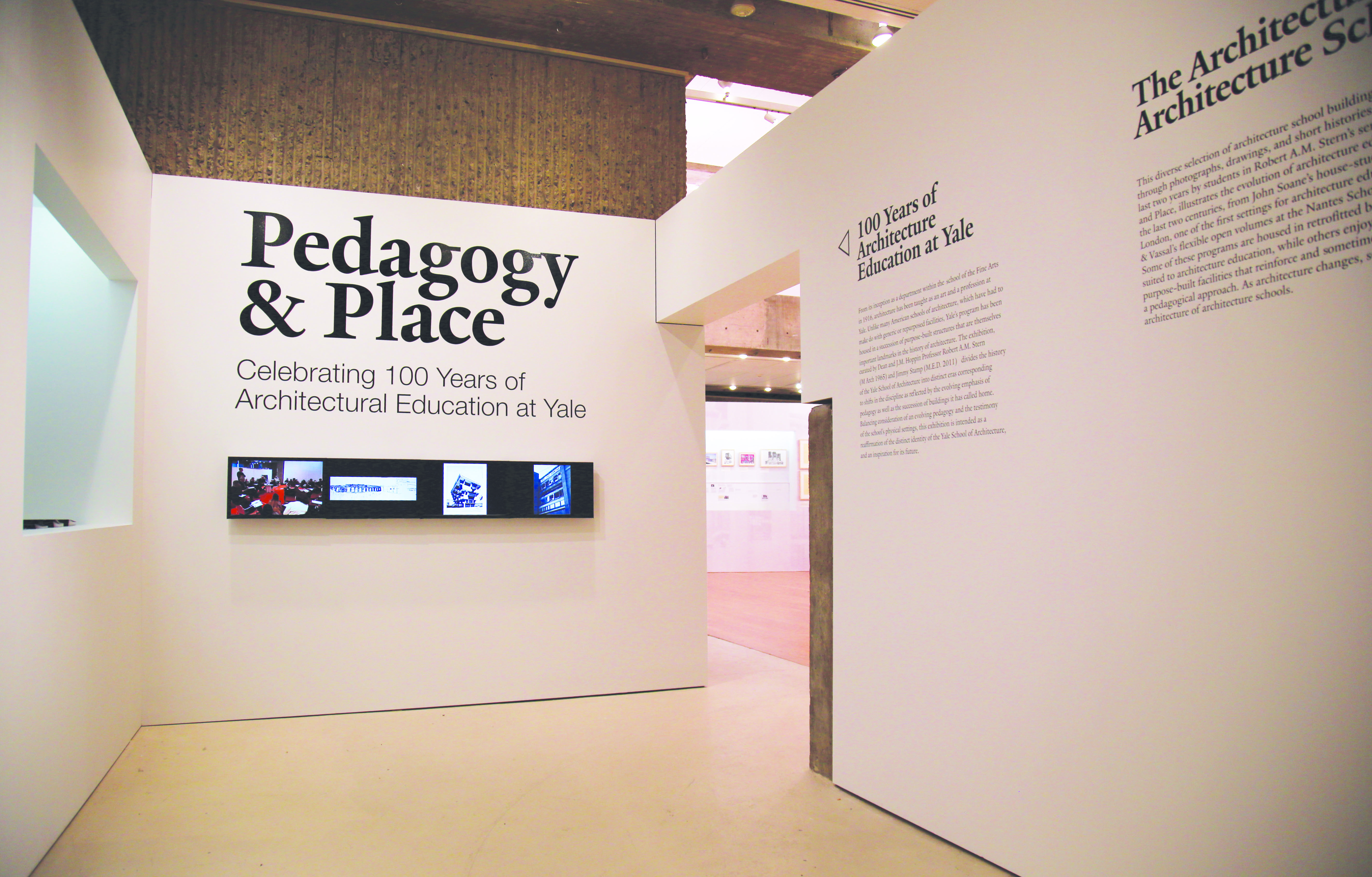
Building a school is also about building a culture.
This is the argument of “Pedagogy and Place: Celebrating 100 Years of Architecture at Yale,” which opened yesterday at the Yale School of Architecture. The exhibition highlights the many transformations undergone by the School since its founding in 1916, as well as the excitement and controversy surrounding the 1963 construction of Paul Rudolph’s Art and Architecture building. In addition, it traces the development of Yale’s pluralist approach to the teaching of architecture, as well as the internal debates that raged over what should constitute the school’s curriculum.
“The characteristic of the school going back to 1916 [was] to have many voices,” said Robert Stern, dean of the School of Architecture, during yesterday’s press tour.
The exhibit, curated by Stern and Jimmy Stamp ARC ’11, consists of two parts. Several partitions are arranged around a central space, on which various pieces of student work hang, including drawings, floor plans and watercolors. These works trace different periods of the school’s history, from its beginnings to the present. Nearby glass cases display documentary material from the periods in question, including student manifestos, broadsheets and interviews.
Reception of Rudolph Hall — the School of Architecture building — has been mixed, curators said, a theme that the exhibition explores. In addition to attacks by traditionalist and anti-modernist critics, the building also suffered a fire in 1969 and was not fully renovated for a number of years, causing space constraints that were eventually relieved by construction of the Loria Center for the History of Art in 2008. A keynote address given by architectural historian Nikolaus Pevsner on the occasion of the building’s dedication was famously critical of the neo-Brutalist structure, Stern said.
“Rudolph, who was a redhead and had a tendency to get red in the face, turned vividly red,” he noted.
In another section of the gallery, displays situate the school’s building and program within a national and international context. Informative placards showcase the architecture of peer institutions- — the École des Beaux-Arts, the Bauhaus and the schools of architecture at MIT and the Illinois Institute of Technology — and how their buildings relate to their respective pedagogical approaches.
The show’s curators said they chose a salon-style installation to ensure they would be able to include material from all periods of the school’s history.
“I think if we had done it any other way, we wouldn’t have been able to include as much material,” said Alfie Koetter ARC ’11, who helped organize the exhibition.
“Pedagogy and Place” will remain on view until the end of the academic year, when Stern will step down and be succeeded by Deborah Berke.







